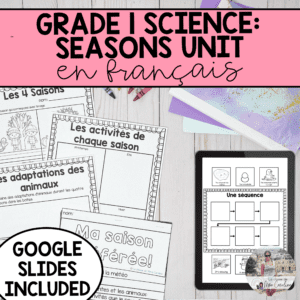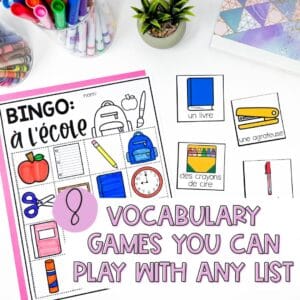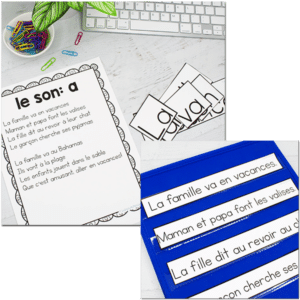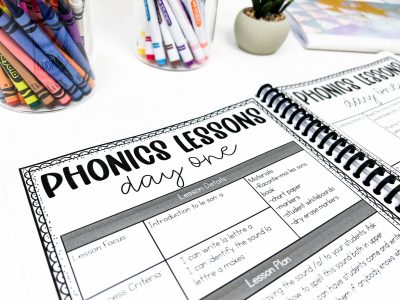The beginning of the school year is a fantastic time to build French vocabulary. Your French Daily and seasonal changes unit is the perfect way to introduce simple vocabulary in your classroom. Your grade one students can easily connect to their prior knowledge, which is important when learning a second language – especially if French is brand new to them! Let’s talk about three experiments you can use in your daily and seasonal changes unit.
Experiment Ideas for Daily and Seasonal Changes
#1 Our Shadows Move Around
Pair students up and take them outside once in the morning and once in the afternoon. In the morning, have students draw an X on the pavement. Then, have them stand on the X while their partner outlines their shadow in chalk. In the afternoon, repeat the same process. Then, discuss what happened. Did the shadow move? Where did it move to? Why did it move?
If weather permits, you can repeat this process again the next day. You’ll discuss whether or not their shadows are in the same place as yesterday and their hypotheses about what is happening. This daily change experiment shows that the sun’s position changes throughout the day and is a great way to introduce daily cycles.

#2 Weather Tracking
There are a few different ways to do this daily and seasonal changes experiment. The first way involves tracking the weather each day and creating a graph at the end of each month. Students will answer questions like what weather was most common this month, what weather was least common, and why they think that is. You can track the weather throughout the year and look at trends during the end of the school year as well.
Another way to track the weather is by putting a cup or bucket outside to collect rainwater. Students will then track how much it rained each day or week.
Lastly, you can conduct this daily or seasonal change experiment by tracking temperature using thermometers. Students can go outside, record the temperature, and then record any patterns they notice, like the fact that the weather gets colder as fall arrives or warmer when spring starts.

#3 Staying Warm in the Winter
For this experiment, you’ll need a bucket of ice water, Crisco, and two Ziploc bags. Start by asking students, “How do we stay warm during the winter? What kind of clothing do we wear and why? How do you think animals stay warm without wearing clothing?” Have students stick their hands in the bucket of ice water and ask them to describe how it feels.
Next, put the Crisco in a large Ziploc bag, then put a smaller Ziploc into the middle. Have students put their hand in the smaller bag and dip it into the water. Ask them, “What do you notice? Is it warmer? Why do you think that is?”
Connect their observations with the animals in their environment. Some have an extra layer of fat that can help keep them warm during the colder months. Others have fur or down that acts as an insulator and keeps warm in the winter. This experiment always leads to great conversations and is great to make connections with the animal adaptations curriculum expectations.

French Daily and Seasonal Changes Unit
Looking for a ready-to-go French Daily and Seasonal Changes Unit? This grade one unit includes engaging experiments, hands-on activities, and assessments to help students master their seasonal French vocabulary and concepts.
You can also check out the blog for more science-related posts. You’ll find recommendations for read-alouds, experiments, and how to introduce various science topics to students.








